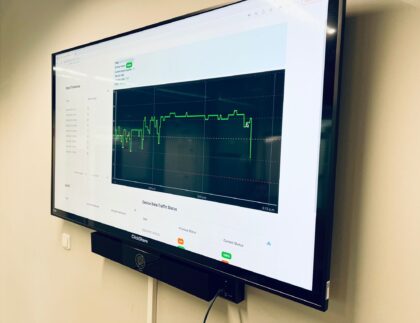What Is Security-as-Code?
The days of bolted-on security are numbered. As DevOps becomes the default way to build and ship software, Security-as-Code (SaC) is rapidly emerging as the next major shift in how organizations secure their digital infrastructure. Security-as-Code isn’t just a buzzword. It’s a mindset—and increasingly, a necessity.
Security-as-Code is the practice of defining and managing security controls using code, just like infrastructure and applications. It means embedding security policies, checks, and guardrails directly into version-controlled, automated pipelines.
Think:
-
IAM roles and policies written in Terraform
-
Firewall rules as YAML in GitHub repos
-
Secrets managed via code-based workflows
-
Static code analysis in CI/CD pipelines
-
Compliance checks as automated scripts
By treating security like code, teams gain:
-
Automation – Reduced human error and manual effort
-
Repeatability – Standardized and scalable across environments
-
Visibility – Security lives in code, not in tribal knowledge
-
Speed – Security doesn’t block deployment—it ships with it
🚀 Why It’s Going Mainstream
1. DevSecOps is now table stakes
Dev and Ops have merged. Security is next. The rise of DevSecOps is forcing security to be part of the delivery pipeline—not an afterthought. Security-as-Code is the bridge.
2. Cloud-native infrastructure demands automation
As businesses move to Kubernetes, serverless, and multi-cloud environments, manual security configurations just can’t keep up. Security must evolve to be as fast and programmable as the infrastructure it protects.
3. Compliance is shifting left
With growing regulatory pressure (SOC 2, ISO 27001, PCI, etc.), organizations are under pressure to prove security is embedded—not just documented. Codifying controls is the most efficient and auditable way to do that.
4. Tooling has matured
Tools like Terraform, OPA/Gatekeeper, Checkov, Snyk, Trivy, and GitHub Actions have made it easier than ever to bake security into pipelines. You no longer need a huge team or custom code to implement SaC.
💸 Why Security-as-Code Is a Big Opportunity
For service providers, consultants, and startups, SaC represents a high-value, future-proof offering:
-
Recurring work – Once you're in the pipeline, clients want ongoing updates and monitoring
-
Compliance-driven demand – Clients need help showing auditors that controls are defined and enforced automatically
-
Vendor lock-in (in a good way) – If you help set up their security automation, they’ll stick with you for the long run
🛠️ Getting Started: How to Bring Security-as-Code Into Your Workflow
Here’s how to dip your toes into Security-as-Code:
-
Start with Infrastructure-as-Code (IaC) scanning
Use tools like Checkov, tfsec, or KICS to scan Terraform or CloudFormation templates. -
Integrate security into CI/CD pipelines
Set up GitHub Actions or GitLab pipelines to enforce policies and run tests. -
Use policy-as-code
Leverage tools like OPA/Gatekeeper or Conftest to write and enforce custom security policies. -
Automate secret scanning and dependency checks
Tools like Gitleaks, TruffleHog, and Snyk can scan codebases in real-time. -
Document and version everything
Store your controls and rules in Git. Treat them like any other piece of code.
🔮 Final Thought: The Shift Is Inevitable
Security-as-Code isn’t just a niche practice—it’s a fundamental evolution in how security will be built into software from the ground up.
The organizations that embrace it will move faster, stay safer, and satisfy compliance with less overhead. The professionals who learn to implement it will be the ones leading the future of cybersecurity.
Security isn’t just something we apply to code ?


